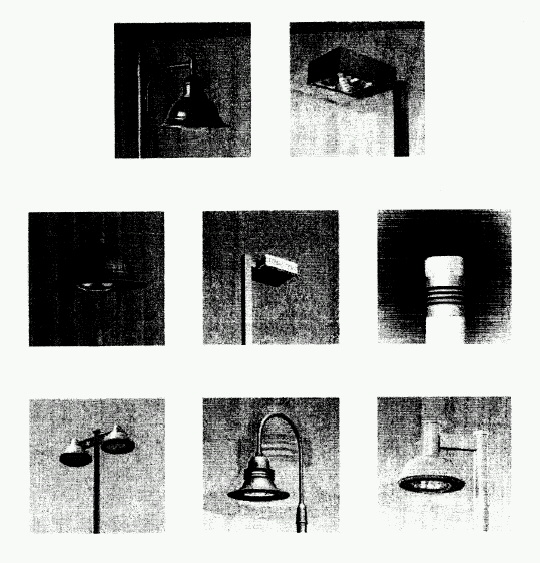Sources:
Good Neighbor Outdoor Lighting Handbook.www.darksky.org
Lumec Lighting Catalog
Cooper Lighting Catalog
USA Architectural Lighting Catalog
What is good lighting?
Good outdoor lights improve visibility, safety, and a sense of security, while minimizing energy use, operating costs, and undesirable glare.
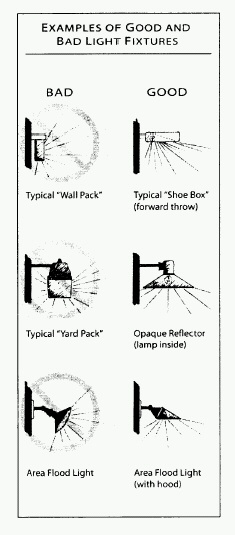
Why should we be concerned?
Many outdoor lights are poorly designed or improperly aimed. Such lights are costly, wasteful, and distracting. They harm the nighttime environment and neighbors property values.
Glare
Basic rule of thumb: If you can see the bright bulb from a distance, it's a bad light. With a good light, you see lit ground instead of the dazzling bulb. Glare is light that beams directly from a bulb into your eye. It hampers the vision of pedestrians, cyclists, and drivers.
Light Trespass
Poor outdoor lighting shines onto neighbors properties and into bedroom windows, reducing privacy, hindering sleep, and giving the area an unattractive, trashy look.
Energy Waste
Many outdoor lights waste energy by spilling much of their light where it is not needed, such as up into the sky. This waste results in high operating costs. We waste over a billion dollars a year in the United States needlessly lighting the night sky.
Sky Glow
Rays that beam uselessly above the horizon create murky sky glow - the "light pollution" that washes out our view of the stars.
How do I switch to good lighting?
(1) Provide only enough light for the task at hand; don't over-light, and don't spill light off your property. Specifying enough light for a job is sometimes hard to do on paper. Remember that a full moon can make an area quite bright. Some lighting systems illuminate areas 100 times more brightly than the full moon! More importantly, by choosing properly shielded lights, you can meet your needs without bothering neighbors or polluting the sky.
(2) Aim lights down. Choose "full-cutoff shielded" fixtures that keep light from going uselessly up or sideways. Such fixtures produce minimum glare. They create a pleasant-looking environment. They increase safety because you see illuminated people, cars, and terrain, instead of being distracted by the glaring bulb.
(3) Install fixtures carefully to maximize their effectiveness on the targeted area and minimize their impact elsewhere. Proper aiming of fixtures is crucial. Most are aimed too high. Try to install them at night, when you can see where all the rays actually go. Properly aimed and shielded lights may cost more initially, but they save you far more in the long-run. They can illuminate your target with a low-wattage bulb just as brightly as a wasteful light does with a high-wattage bulb.
(4) Choose energy-efficient low-pressure sodium (LPS) or high-pressure sodium (HPS) lamps wherever yellowish light will do the job. Use less efficient white lights only where ideal color rendition is important.
(5) Where feasible, put lights on timers to turn them off each night after they are no longer needed. Put home security lights on a motion-detector switch, which turns them on only when someone enters the area; this provides a great deterrent!

Recommended Lighting Levels/Photometrics
Lighting vendors will typically include photometric diagrams similar to those shown below for each fixture that they offer. The diagrams will help you determine appropriate lighting for specific applications.
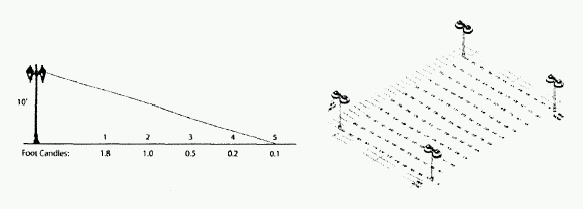
The table below lists recommended lighting levels in units of measurement called foot-candles. The photometric diagrams specific to the fixtures that you choose, along with the recommended lighting levels, will help you and/or a lighting designer determine the most efficient spacing and positioning of fixtures.
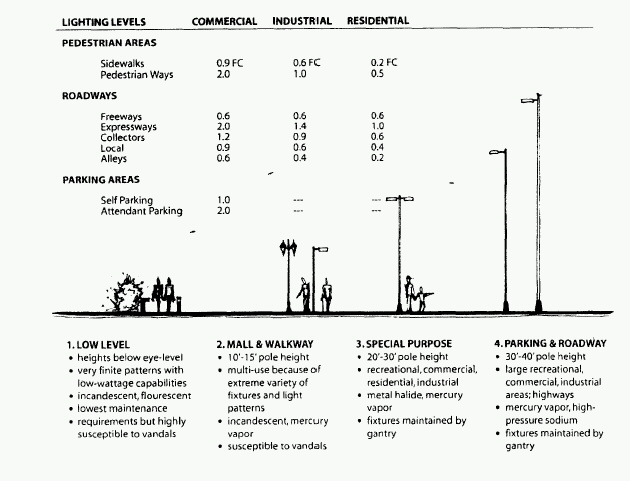
Select a fitting pole for the fixture
The styles of light poles shown below are appropriate for pedestrian and/or street lighting. Selection of poles should take into consideration the style of nearby poles so as to maintain a consistent appearance. See the lighting standards portion of this document for height, spacing, and intensity requirements.
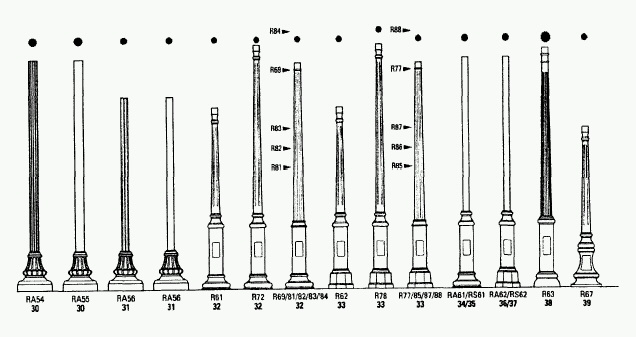
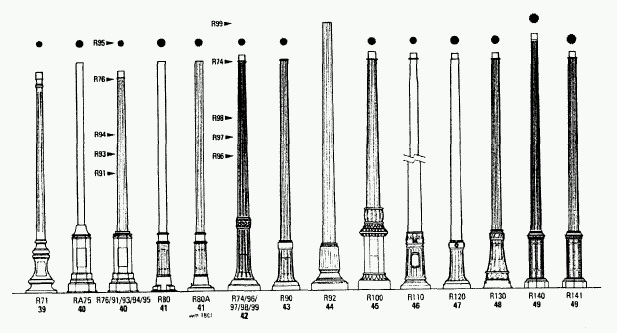
Select a fitting fixture for the pole
The styles of fixtures shown below are appropriate for pedestrian and/or street lighting. Selection of fixtures should take into consideration the style of nearby fixtures so as to maintain a consistent appearance. See the lighting standards portion of this document for height, spacing, and intensity requirements.
